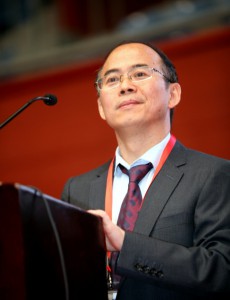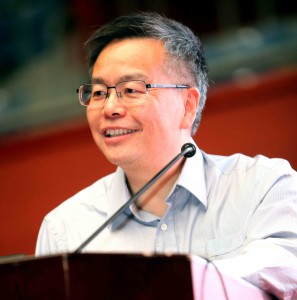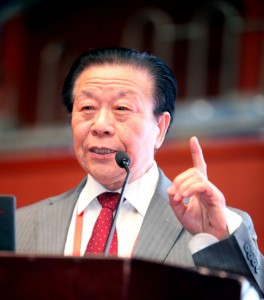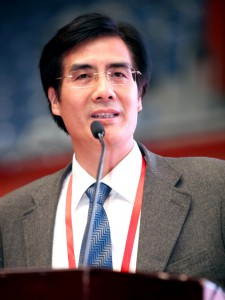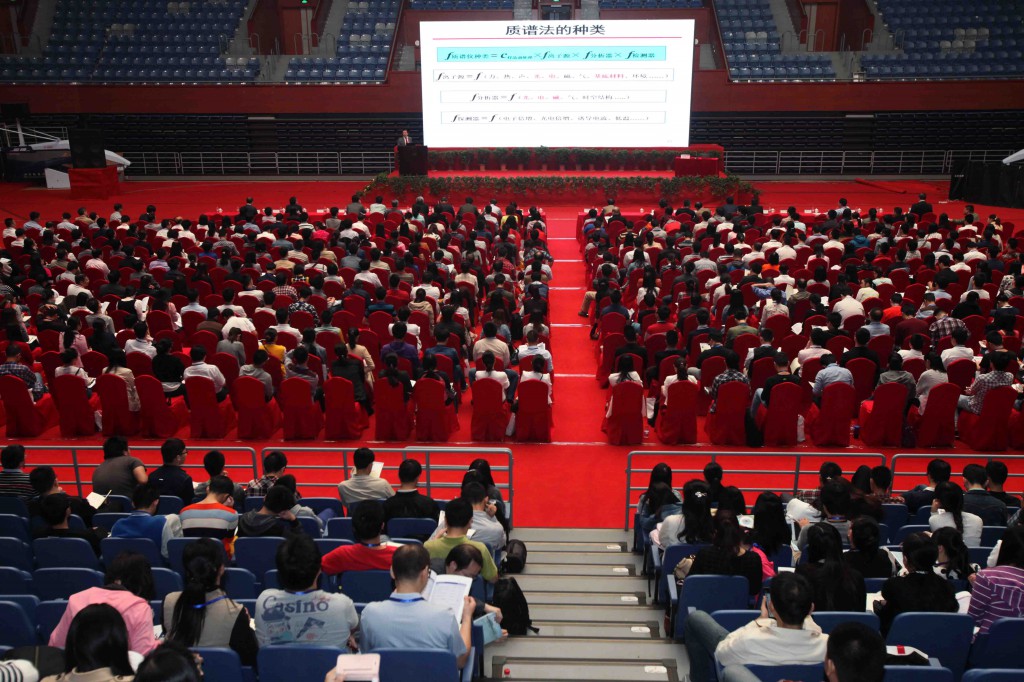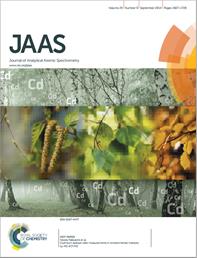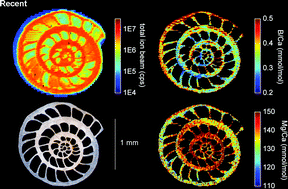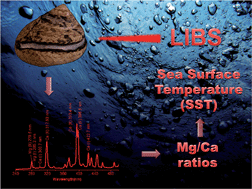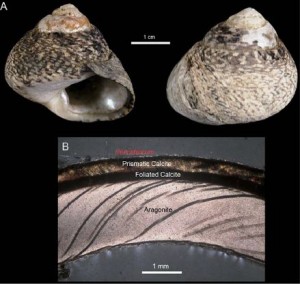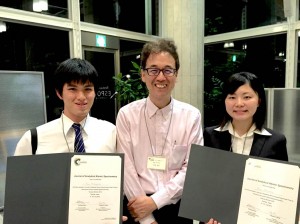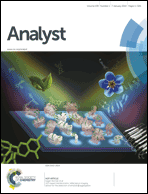In honour of the 30th anniversary year of JAAS, a special editorial is now published in Issue 1, 2016 by David W. Koppenaal, Chief Technology Officer, Pacific Northwest National laboratory, Richland, USA. The editorial looks back over the  top 30 publications over the past 30 years and provides insight into both analytical trends and citation behaviour over this period.
top 30 publications over the past 30 years and provides insight into both analytical trends and citation behaviour over this period.
To celebrate this landmark anniversary of JAAS, we are delighted to make the top cited papers free to access for four weeks. We hope you enjoy reading the high quality work the journal has published over the last three decades!
Laser ablation inductively coupled plasma mass spectrometric transient signal data acquisition and analyte concentration calculation
Henry P. Longerich, Simon E. Jackson and Detlef Günther
J. Anal. At. Spectrom., 1996, 11, 899-904
DOI: 10.1039/JA9961100899
Hf isotope ratio analysis using multi-collector inductively coupled plasma mass spectrometry: an evaluation of isobaric interference corrections
Nan-Chin Chu, Rex N. Taylor, Valérie Chavagnac, Robert W. Nesbitt, Rose M. Boella, J. Andrew Milton, Christopher R. German, Germain Bayon and Kevin Burton
J. Anal. At. Spectrom., 2002,17, 1567-1574
DOI: 10.1039/B206707B
Capabilities of an Argon Fluoride 193 nm Excimer Laser for Laser Ablation Inductively Coupled Plasma Mass Spectometry Microanalysis of Geological Materials
Detlef Günther, Rolf Frischknecht, Christoph A. Heinrich and Hans-J. Kahlhert
J. Anal. At. Spectrom., 1997,12, 939-944
DOI: 10.1039/A701423F
Solid sampling in electrothermal atomic absorption spectrometry using commercial atomizers. A review
Carlos Bendicho and Margaretha T. C. de Loos-Vollebregt
J. Anal. At. Spectrom., 1991,6, 353-374
DOI: 10.1039/JA9910600353
Interferences in inductively coupled plasma mass spectrometry. A review
E. Hywel Evans and Jeffrey J. Giglio
J. Anal. At. Spectrom., 1993,8, 1-18
DOI: 10.1039/JA9930800001
Precision and accuracy in isotope ratio measurements by plasma source mass spectrometry
Klaus G. Heumann, Stefan M. Gallus, Gunther Rädlinger and Jochen Vogl
J. Anal. At. Spectrom., 1998, 13, 1001-1008
DOI: 10.1039/A801965G
Carbon-enhanced inductively coupled plasma mass spectrometric detection of arsenic and selenium and its application to arsenic speciation
Erik H. Larsen and Stefan Stürup
J. Anal. At. Spectrom., 1994, 9, 1099-1105
DOI: 10.1039/JA9940901099
Enhanced sensitivity in laser ablation-ICP mass spectrometry using helium-argon mixtures as aerosol carrier
Detlef Günther and Christoph A. Heinrich
J. Anal. At. Spectrom., 1999,14, 1363-1368
DOI: 10.1039/A901648A
Effect of particle size distribution on ICP-induced elemental fractionationin laser ablation-inductively coupled plasma-mass spectrometry
Marcel Guillong and Detlef Günther
J. Anal. At. Spectrom., 2002,17, 831-837
DOI: 10.1039/B202988J
Palladium nitrate–magnesium nitrate modifier for electrothermal atomic absorption spectrometry. Part 5. Performance for the determination of 21 elements
Bernhard Welz, Gerhard Schlemmer and Jayateerth R. Mudakavi
J. Anal. At. Spectrom., 1992,7, 1257-1271
DOI: 10.1039/JA9920701257
Matrix-effect observations in inductively coupled plasma mass spectrometry
Samantha H. Tan and Gary Horlick
J. Anal. At. Spectrom., 1987,2, 745-763
DOI: 10.1039/JA9870200745
Arsenic speciation in seafood samples with emphasis on minor constituents: an investigation using high-performance liquid chromatography with detection by inductively coupled plasma mass spectrometry
Erik H. Larsen, Gunnar Pritzl and Steen Honoré Hansen
J. Anal. At. Spectrom., 1993,8, 1075-1084
DOI: 10.1039/JA9930801075
Laser ablation inductively coupled plasma mass spectrometry: achievements, problems, prospects
Steven F. Durrant
J. Anal. At. Spectrom., 1999,14, 1385-1403
DOI: 10.1039/A901765H
Determination of total and speciated arsenicin rice by ion chromatography and inductively coupled plasma mass spectrometry
Douglas T. Heitkemper, Nohora P. Vela, Kirsten R. Stewart and Craig S. Westphal
J. Anal. At. Spectrom., 2001,16, 299-306
DOI: 10.1039/B007241I
Fully automated dissolution and separation methods for inductively coupled plasma atomic emission spectrometry rock analysis. Application to the determination of rare earth elements. Plenary lecture
Kuppusami Govindaraju and Guy Mevelle
J. Anal. At. Spectrom., 1987,2, 615-621
DOI: 10.1039/JA9870200615
Metallomics as integrated biometal science
Hiroki Haraguchi
J. Anal. At. Spectrom., 2004,19, 5-14
DOI: 10.1039/B308213J
Common-Pb corrected in situ U–Pb accessory mineral geochronology by LA-MC-ICP-MS
Matthew S. A. Horstwood, Gavin L. Foster, Randall R. Parrish, Stephen R. Noble and Geoff M. Nowell
J. Anal. At. Spectrom., 2003, 18, 837-846
DOI: 10.1039/B304365G
Quantitative analysis of major, minor and trace elements in fluid inclusions using laser ablation–inductively coupled plasma mass spectrometry
Detlef Günther, Andreas Audétat, Rolf Frischknecht and Christoph A. Heinrich
J. Anal. At. Spectrom., 1998,13, 263-270
DOI: 10.1039/A707372K
Palladium nitrate-magnesium nitrate modifier for graphite furnace atomic absorption spectrometry. Part 2. Determination of arsenic, cadmium, copper, manganese, lead, antimony, selenium and thallium in water
Bernhard Welz, Gerhard Schlemmer and Jayateerth R. Mudakavi
J. Anal. At. Spectrom., 1988,3, 695-701
DOI: 10.1039/JA9880300695
Magnesium isotope heterogeneity of the isotopic standard SRM980 and new reference materials for magnesium-isotope-ratio measurements
Albert Galy, Olga Yoffe, Philip E. Janney, Ross W. Williams, Christophe Cloquet, Olivier Alard, Ludwik Halicz, Meenakshi Wadhwa, Ian D. Hutcheon, Erick Ramon and Jean Carignan
J. Anal. At. Spectrom., 2003,18, 1352-1356
DOI: 10.1039/B309273A
Comparing several atomic spectrometric methods to the super stars: special emphasis on laser induced breakdown spectrometry, LIBS, a future super star
James D. Winefordner, Igor B. Gornushkin, Tiffany Correll, Emily Gibb, Benjamin W. Smith and Nicoló Omenetto
J. Anal. At. Spectrom., 2004,19, 1061-1083
DOI: 10.1039/B400355C
Multiwalled carbon nanotubes as solid-phase extraction adsorbent for the preconcentration of trace metal ions and their determination by inductively coupled plasma atomic emission spectrometry
Pei Liang, Yan Liu, Li Guo, Jing Zeng and Hanbing Lu
J. Anal. At. Spectrom., 2004,19, 1489-1492
DOI: 10.1039/B409619C
Flow injection on-line sorbent extraction pre-concentration for graphite furnace atomic absorption spectrometry
Zhaolun Fang, Michael Sperling and Bernhard Welz
J. Anal. At. Spectrom., 1990,5, 639-646
DOI: 10.1039/JA9900500639
Gas dynamics of the inductively coupled plasma mass spectrometry interface
D. J. Douglas and J. B. French
J. Anal. At. Spectrom., 1988,3, 743-747
DOI: 10.1039/JA9880300743
Communication. Isotopic ratio measurement using a double focusing magnetic sector mass analyser with an inductively coupled plasma as an ion source
Andrew J. Walder and Philip A. Freedman
J. Anal. At. Spectrom., 1992,7, 571-575
DOI: 10.1039/JA9920700571
Quantitative analysis of trace element abundances in glasses and minerals: a comparison of laser ablation inductively coupled plasma mass spectrometry, solution inductively coupled plasma mass spectrometry, proton microprobe and electron microprobe data
Marc D. Norman, William L. Griffin, Norman J. Pearson, Michael O. Garcia and Suzanne Y. O’reilly
J. Anal. At. Spectrom., 1998,13, 477-482
DOI: 10.1039/A707972I
Investigations of a reduced palladium chemical modifier for graphite furnace atomic absorption spectrometry
Lucinda M. Voth-Beach and Douglas E. Shrader
J. Anal. At. Spectrom., 1987,2, 45-50
DOI: 10.1039/JA9870200045
A critical assessment of laser ablation ICP-MS as an analytical tool for depth analysis in silica-based glass samples
Arjan J. G. Mank and Paul R. D. Mason
J. Anal. At. Spectrom., 1999,14, 1143-1153
DOI: 10.1039/A903304A
Isotope ratio measurement of lead, neodymium and neodymium–samarium mixtures, Hafnium and Hafnium–Lutetium mixtures with a double focusing multiple collector inductively coupled plasma mass spectrometer
Andrew J. Walder, I. Platzner and Philip A. Freedman
J. Anal. At. Spectrom., 1993,8, 19-23
DOI: 10.1039/JA9930800019
Signal enhancement in laser ablation ICP-MS by addition of nitrogen in the central channel gas
Zhaochu Hu, Shan Gao, Yongsheng Liu, Shenghong Hu, Haihong Chen and Honglin Yuan
J. Anal. At. Spectrom., 2008,23, 1093-1101
DOI: 10.1039/B804760J
Determination of arsenic species by high-performance liquid chromatography-inductively coupled plasma mass spectrometry
Diane Beauchemin, K. W. M. Siu, James W. McLaren and Shier S. Berman
J. Anal. At. Spectrom., 1989,4, 285-289
DOI: 10.1039/JA9890400285
Slurry sample preparation for simultaneous multi-element graphite furnace atomic absorption spectrometry
Nancy J. Miller-Ihli
J. Anal. At. Spectrom., 1988,3, 73-81
DOI: 10.1039/JA9880300073
Happy Anniversary JAAS!











